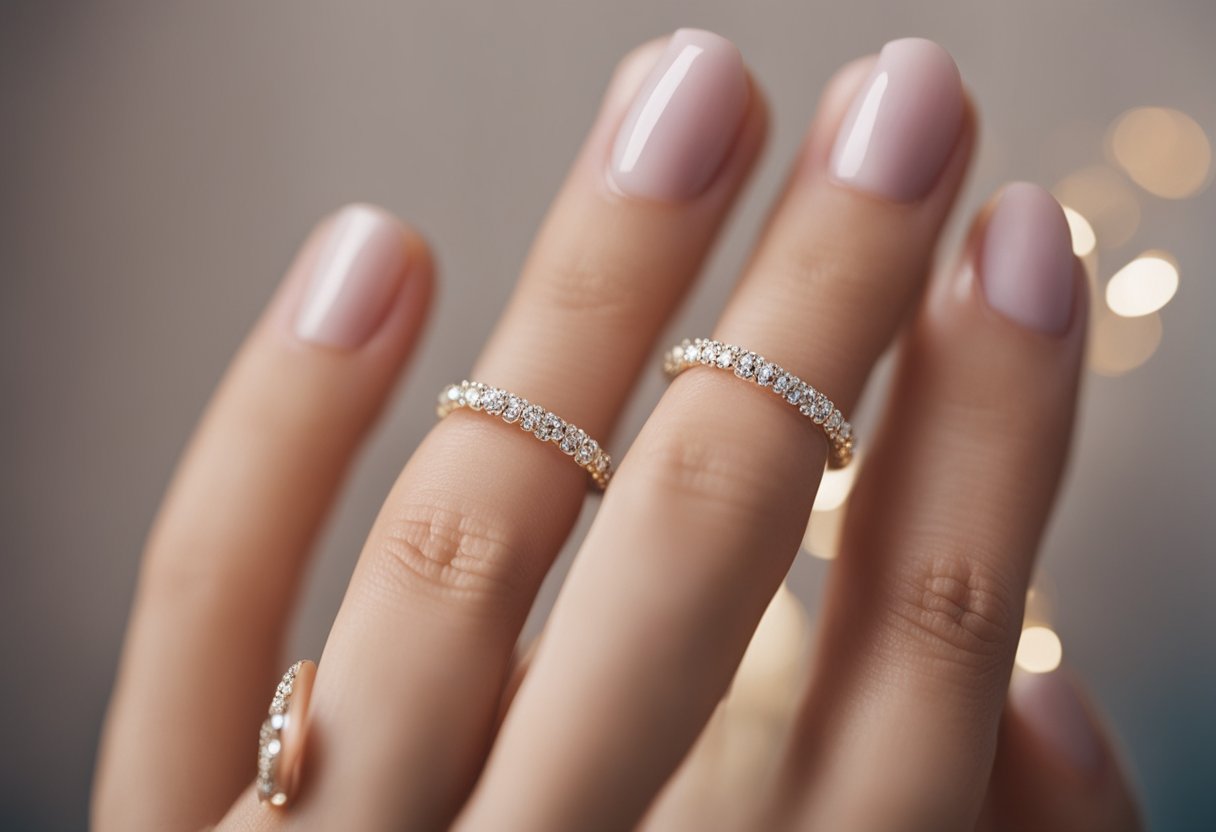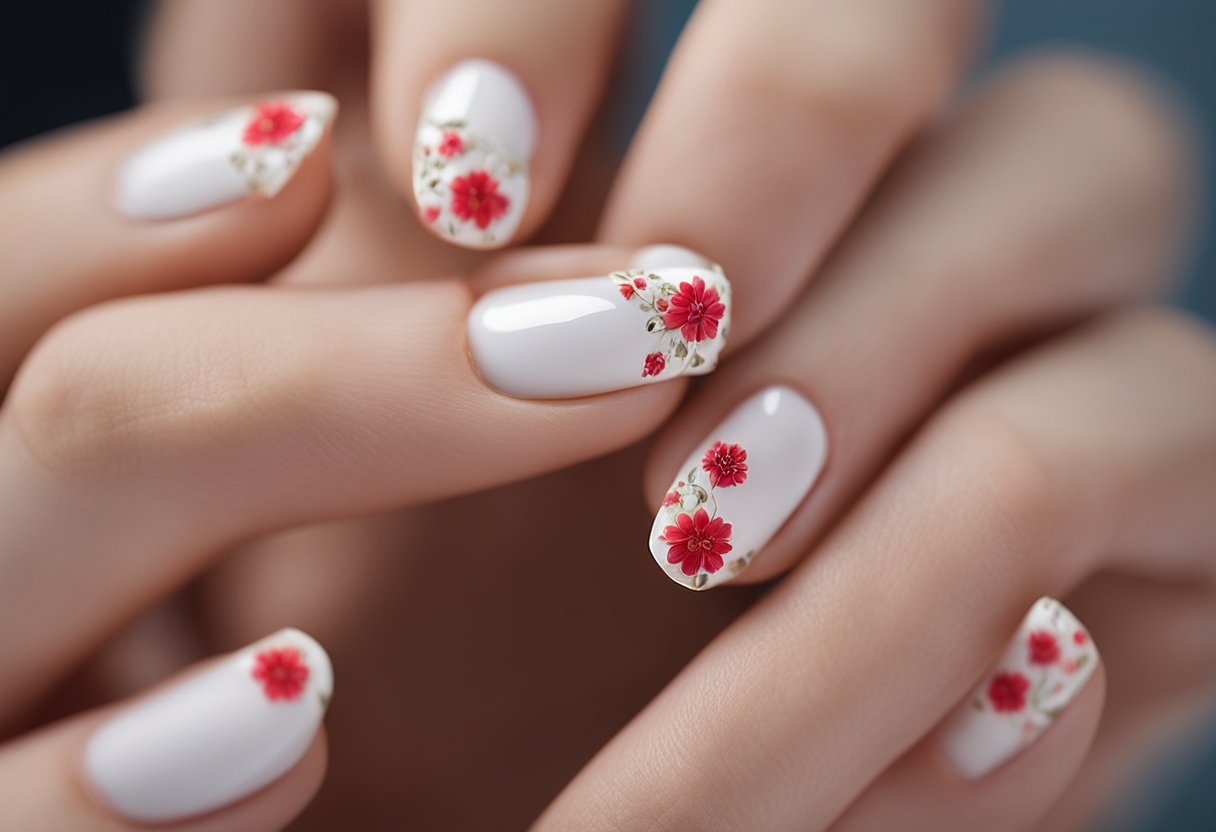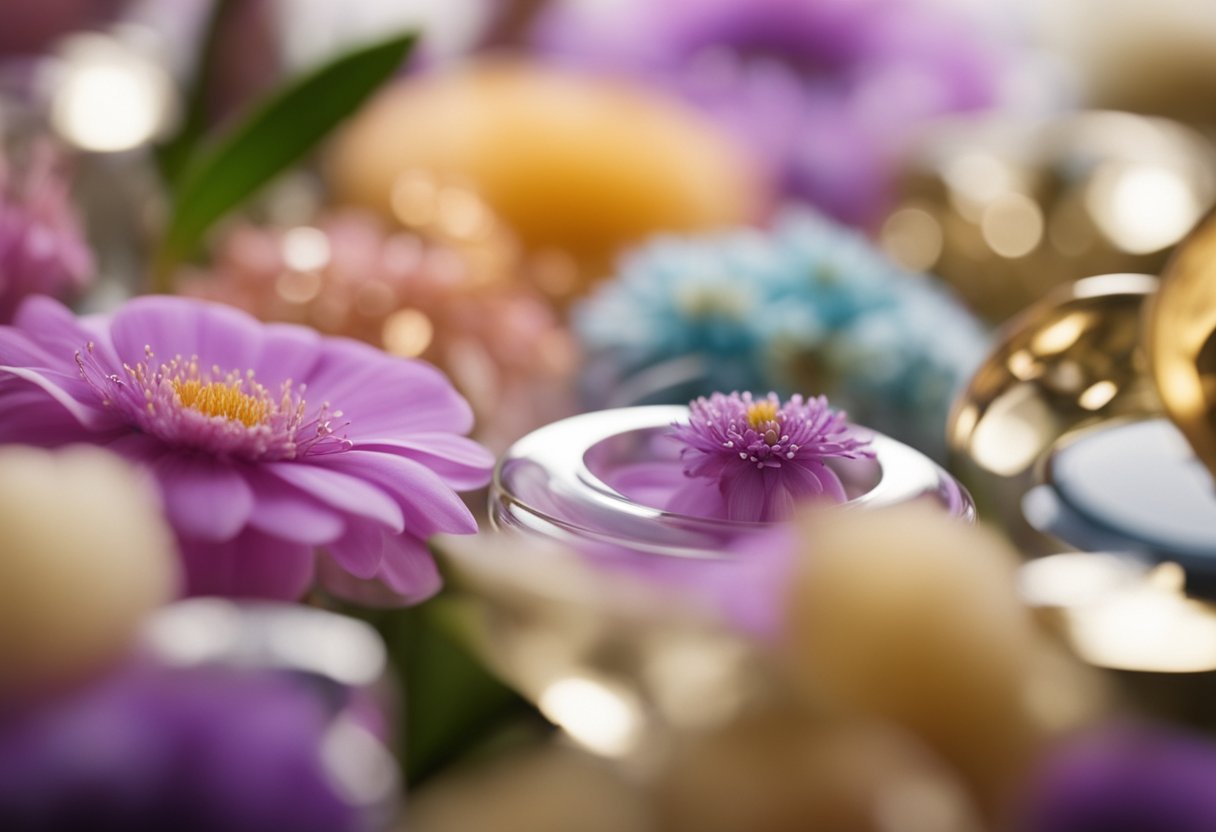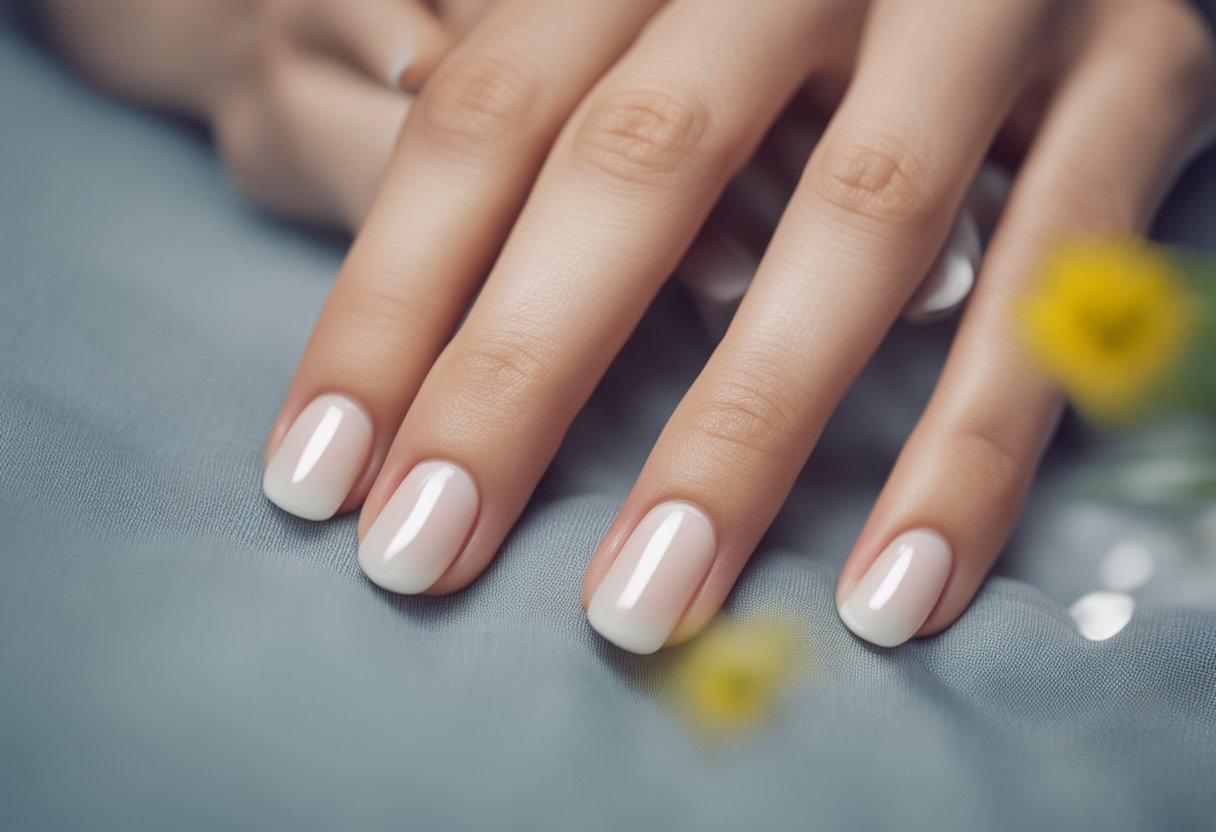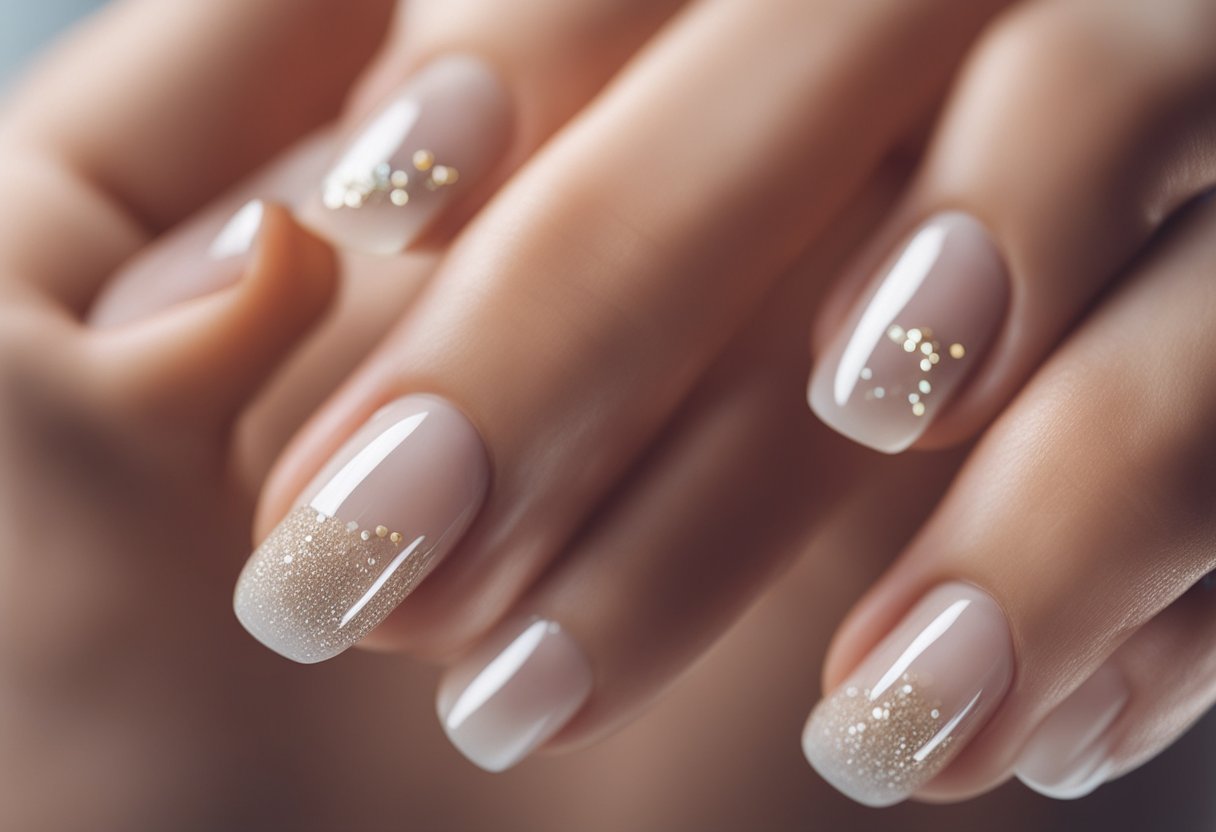My cuticles are sore after a manicure. This is a common complaint that many people have after getting their nails done. Cuticle soreness can be a result of various factors, including the use of harsh chemicals, improper techniques, and underlying health conditions. Understanding the causes of cuticle soreness and how to prevent it can help you maintain healthy nails.
Cuticles are the thin layer of skin that surrounds the base of the nail. They protect the nail bed from infections and other harmful elements. During a manicure, the cuticles are often pushed back or trimmed to create a neat and polished look. However, if the cuticles are cut too short or pushed back too far, they can become inflamed and sore. This can lead to pain, redness, and swelling around the nail bed.
Key Takeaways
- Cuticle soreness is a common complaint after a manicure.
- Improper techniques, harsh chemicals, and underlying health conditions can cause cuticle soreness.
- To prevent cuticle soreness, it’s important to maintain proper nail hygiene, use gentle products, and seek professional care when necessary.
Understanding Cuticle Soreness
https://www.youtube.com/watch?v=yyaiNbLX1Pw&embed=true
As someone who regularly gets manicures, I understand how frustrating it can be to experience cuticle soreness after a manicure. Cuticle soreness is a common issue that can be caused by a variety of factors, including improper cuticle removal, excessive filing, and the use of harsh chemicals.
Cuticles are the thin layer of skin that surrounds the base of your nails. They serve as a protective barrier, preventing bacteria and other harmful substances from entering your body. When cuticles are damaged or removed improperly, it can lead to pain and inflammation.
One of the most common causes of cuticle soreness is paronychia, a bacterial infection that occurs when bacteria enter broken skin near the cuticle and nail fold. Symptoms of paronychia include pain, redness, and swelling around the nail, as well as pus-filled blisters. If you suspect that you have a bacterial infection, it is important to seek medical attention as soon as possible.
Another cause of cuticle soreness is excessive filing. When too much pressure is applied to the nail, it can cause the cuticle to become inflamed and sore. To avoid this, it is important to use a gentle touch when filing your nails and to never file the skin around the nail.
Finally, the use of harsh chemicals during a manicure can also lead to cuticle soreness. Many nail products contain chemicals that can be irritating to the skin, such as formaldehyde, toluene, and dibutyl phthalate. To avoid this, it is important to choose nail products that are free of these harmful chemicals.
Overall, cuticle soreness is a common issue that can be caused by a variety of factors. By taking a few simple precautions, such as using gentle pressure when filing your nails and choosing nail products that are free of harmful chemicals, you can help prevent cuticle soreness and keep your nails healthy and beautiful.
Causes of Sore Cuticles
https://www.youtube.com/watch?v=ByMeiAsuc0c&embed=true
As someone who has worked in the nail industry for several years, I have seen many cases of sore cuticles after a manicure. It is important to understand the different causes of sore cuticles to prevent them from occurring in the future.
Injury
One of the most common causes of sore cuticles is injury. This can happen if the cuticles are pushed back too far or cut too deeply during a manicure. Injuries can also occur if you bite your nails or pick at your cuticles.
Chemicals
Exposure to harsh chemicals, such as cleaning products or nail polish remover, can also irritate the skin and cause pain in the cuticles. It is important to wear gloves when working with these chemicals to protect your skin.
Paronychia
Paronychia is a bacterial or fungal infection that can occur around the nails. Acute paronychia comes on suddenly and may not last long, while chronic paronychia lasts longer and may occur on your fingers or toes. It can be caused by injury, biting, or ingrown toenails. People with diabetes are more prone to developing paronychia.
Hangnails
Hangnails can also cause sore cuticles. They occur when a small piece of skin tears near the nail bed. This can be caused by dry skin or biting your nails.
Manicures
Finally, sore cuticles can also be caused by manicures. If the cuticles are pushed back too far or cut too deeply, it can cause pain and soreness. It is important to find a reputable nail salon and communicate your preferences with your nail technician to prevent this from happening.
In conclusion, there are many different causes of sore cuticles after a manicure. By understanding these causes, you can take steps to prevent them from occurring in the future.
Symptoms and Diagnosis
When you experience soreness in your cuticles after a manicure, you may notice a range of symptoms. These can include redness, swelling, tenderness, and even the formation of an abscess. You may also experience inflammation in the surrounding skin, which can be uncomfortable and unsightly.
If you are concerned about the soreness in your cuticles after a manicure, it is important to seek a diagnosis from a doctor or healthcare provider. During a physical exam, your doctor will examine your nails and the surrounding skin to look for signs of infection or inflammation. They may also ask about your medical history to determine if you have any underlying conditions that could be contributing to your symptoms.
In some cases, your doctor may recommend additional tests or procedures to help diagnose the cause of your cuticle soreness. For example, they may take a sample of the pus from an abscess to test for the presence of bacteria or other pathogens. They may also order blood tests to check for signs of infection or inflammation in your body.
Overall, if you are experiencing soreness in your cuticles after a manicure, it is important to seek a diagnosis from a qualified healthcare provider. With the right diagnosis and treatment, you can find relief from your symptoms and prevent further complications.
Treatment Options
https://www.youtube.com/watch?v=rKoXTG4PQSM&embed=true
If you notice soreness or redness around your cuticles after a manicure, it is important to seek treatment promptly. There are several treatment options available depending on the severity of the infection.
Antibiotics
If the infection is bacterial, your doctor may prescribe antibiotics. Oral antibiotics such as amoxicillin or cephalexin may be prescribed to treat more severe infections. Topical antibiotics may also be used for less severe infections. It is important to complete the full course of antibiotics as prescribed, even if the infection appears to be improving.
Incision and Drainage
In some cases, your doctor may need to drain pus from the infected area. This is done through a small incision made in the skin. After the pus is drained, the area is cleaned and covered with gauze. This procedure is usually done in the doctor’s office and is relatively quick and painless.
Antifungal Medication
If the infection is fungal, your doctor may prescribe antifungal medication. This medication can be taken orally or applied topically. It is important to keep the infected area clean and dry to prevent the infection from spreading.
Prevention
Preventing infections is the best course of action. Make sure that the tools your manicurist uses are properly sterilized. Avoid cutting or pushing back your cuticles, as this can create a pathway for bacteria and fungi to enter. Keep your hands and nails clean and dry, and avoid sharing nail clippers or other tools.
Remember, if you notice any signs of infection, seek treatment promptly. With the right treatment, you can prevent the infection from spreading and avoid more serious complications.
Prevention Measures
As someone who has experienced sore cuticles after a manicure, I understand how uncomfortable and painful it can be. Fortunately, there are several prevention measures you can take to avoid this problem in the future.
First and foremost, hygiene is crucial. Always make sure that the tools being used during your manicure are clean and sanitized. If you are unsure, don’t hesitate to ask your manicurist to show you that they have been properly disinfected. Additionally, it is important to avoid biting or picking at your cuticles, which can introduce bacteria and lead to infection.
Wearing gloves during household chores can also be beneficial. Rubber or waterproof gloves can protect your hands from harsh chemicals and excess water, which can dry out your skin and cause damage to your cuticles.
Moisturizing your hands and cuticles regularly is also key. Using a lotion or moisturizer containing ingredients such as shea butter, jojoba oil, or vitamin E can help keep your skin hydrated and prevent dryness and cracking. It is important to note that moisturizing should be done regularly, not just immediately after a manicure.
Lastly, if you have any pre-existing skin conditions, it is important to take additional protection measures. Consult with your dermatologist or healthcare provider to determine the best course of action for your specific needs.
By following these prevention measures, you can reduce the likelihood of experiencing sore cuticles after a manicure. Remember, taking care of your hands and nails is an ongoing process, and requires regular attention and maintenance.
Role of Professional Care
https://www.youtube.com/watch?v=WegmYY2rmbA&embed=true
As a licensed nail technician, I understand the importance of proper cuticle care during a manicure. However, even with proper technique, cuticle soreness or infection can still occur. In these cases, seeking professional care from a dermatologist or healthcare provider is recommended.
A dermatologist can evaluate the soreness or infection and determine the best course of treatment. They may take a sample of the affected area for laboratory testing or culture to identify the cause of the infection and prescribe appropriate medication. It is important to note that if left untreated, a cuticle infection can spread to other areas of the nail and even to the bone, leading to serious complications.
In addition to seeking professional care, it is important to practice good cuticle care at home to prevent future infections. This includes regularly moisturizing the cuticles to prevent dryness and cracking, avoiding cutting or pushing back the cuticles during a manicure, and avoiding biting or picking at the cuticles.
The American Academy of Dermatology also recommends using clean and properly sanitized nail tools during a manicure to prevent the spread of infection. As a licensed nail technician, I always make sure to properly sanitize all of my tools between clients to ensure the safety and health of my clients.
Overall, while proper cuticle care during a manicure is important, seeking professional care when experiencing cuticle soreness or infection is crucial for proper treatment and prevention of complications.
Long-Term Outlook
Based on my research, cuticle soreness after a manicure is usually a temporary condition that can be treated with home remedies or over-the-counter medication. In most cases, the soreness should subside within a few days to a week. However, in rare cases, the soreness may persist for several weeks or even months.
If the soreness persists for an extended period, it is essential to consult a dermatologist to rule out any underlying medical conditions. In some cases, cuticle soreness can be a symptom of a more severe condition such as osteomyelitis, a bone infection that can cause permanent damage if left untreated.
Fortunately, osteomyelitis is a rare complication of cuticle soreness and is more likely to occur in people with weakened immune systems or those with chronic medical conditions. If you are in good health and take proper care of your nails and cuticles, the chances of developing osteomyelitis are minimal.
In most cases, proper nail and cuticle care can prevent soreness and other nail-related issues. This includes keeping your nails and cuticles clean and dry, avoiding harsh chemicals and excessive moisture, and using moisturizers and other nail care products as directed.
Overall, the prognosis for cuticle soreness after a manicure is excellent, and most people can expect to recover fully within a few days to a week. However, if you experience persistent soreness or other symptoms, it is essential to seek medical attention to rule out any underlying medical conditions.
Home Remedies and Lifestyle Changes
After experiencing sore cuticles following a manicure, there are several home remedies and lifestyle changes that I can try to alleviate the discomfort and promote healing.
One of the first steps I can take is to avoid using nail polish remover or acetone on my nails. These products can be harsh on the skin and can exacerbate any inflammation or irritation. Instead, I can try using a gentle, non-acetone nail polish remover or simply let my nails go without polish for a few days.
Another helpful remedy is to apply a moisturizing hand lotion or ointment to the affected area. This can help to soothe dry skin and promote healing. I can also try using a biotin supplement to help strengthen my nails and promote healthy growth.
In addition to these remedies, there are several lifestyle changes I can make to help prevent sore cuticles in the future. For example, I can make sure to keep my hands and nails well-moisturized by applying lotion regularly. I can also avoid using harsh chemicals on my nails and skin, such as nail hardeners or acetone-based products.
Overall, there are several effective home remedies and lifestyle changes that I can try to help alleviate sore cuticles after a manicure. By taking these steps, I can promote healing and prevent future discomfort and irritation.
Frequently Asked Questions
How can I soothe sore cuticles after a manicure?
If you experience sore cuticles after a manicure, there are a few things you can do to soothe the discomfort. First, try soaking your fingers in warm water with a few drops of tea tree oil or Epsom salt. This can help reduce inflammation and promote healing. You can also apply a soothing balm or oil, such as coconut oil or vitamin E oil, to the affected area. Be sure to avoid picking at your cuticles, as this can cause further irritation.
Why do my nails hurt after getting acrylics?
It’s not uncommon to experience some discomfort after getting acrylic nails, especially if they are applied too tightly or if the nail bed is damaged during the application process. This can cause soreness, tenderness, and even a throbbing sensation. To reduce the discomfort, try taking an over-the-counter pain reliever, such as ibuprofen or acetaminophen. You can also apply a cold compress to the affected area to help reduce inflammation.
What can I do if my nails are sore after gel removal?
If your nails are sore after removing gel polish, it’s important to give them time to heal. Avoid applying any more polish or products to your nails until they have fully recovered. You can apply a soothing balm or oil, such as jojoba oil or almond oil, to the affected area to help promote healing. Be sure to also avoid picking or biting at your nails, as this can cause further damage and delay the healing process.
Is it normal for nails to hurt after applying nail polish?
It’s not uncommon to experience some discomfort after applying nail polish, especially if you have sensitive nails or if the polish is applied too thickly. This can cause soreness, tenderness, and even a throbbing sensation. To reduce the discomfort, try soaking your nails in warm water with a few drops of essential oil, such as lavender or peppermint. You can also apply a cold compress to the affected area to help reduce inflammation.
Why do gel nails sometimes hurt under UV light?
Gel nails can sometimes cause discomfort or pain when exposed to UV light, especially if the nails are over-cured or if the light is too strong. To reduce the discomfort, try using a lower-wattage UV lamp or reducing the curing time. You can also apply a cold compress to the affected area to help reduce inflammation.
What can I do to prevent soreness around my nails after a manicure?
To prevent soreness around your nails after a manicure, be sure to choose a reputable nail salon with experienced technicians. Make sure that your cuticles are not cut too deeply, and avoid having your nails filed too aggressively. You can also apply a strengthening treatment to your nails to help improve their overall health and resilience. Finally, be sure to keep your nails clean and dry, and avoid exposing them to harsh chemicals or excessive moisture.

Hi, I’m Sal Muller of Tooltrip.com. My DIY experience led me to understand essential power tools for home projects. Tooltrip.com guides enthusiasts and professionals in choosing right tools for any job. I provide concise top tool reviews for easier, efficient DIY.

